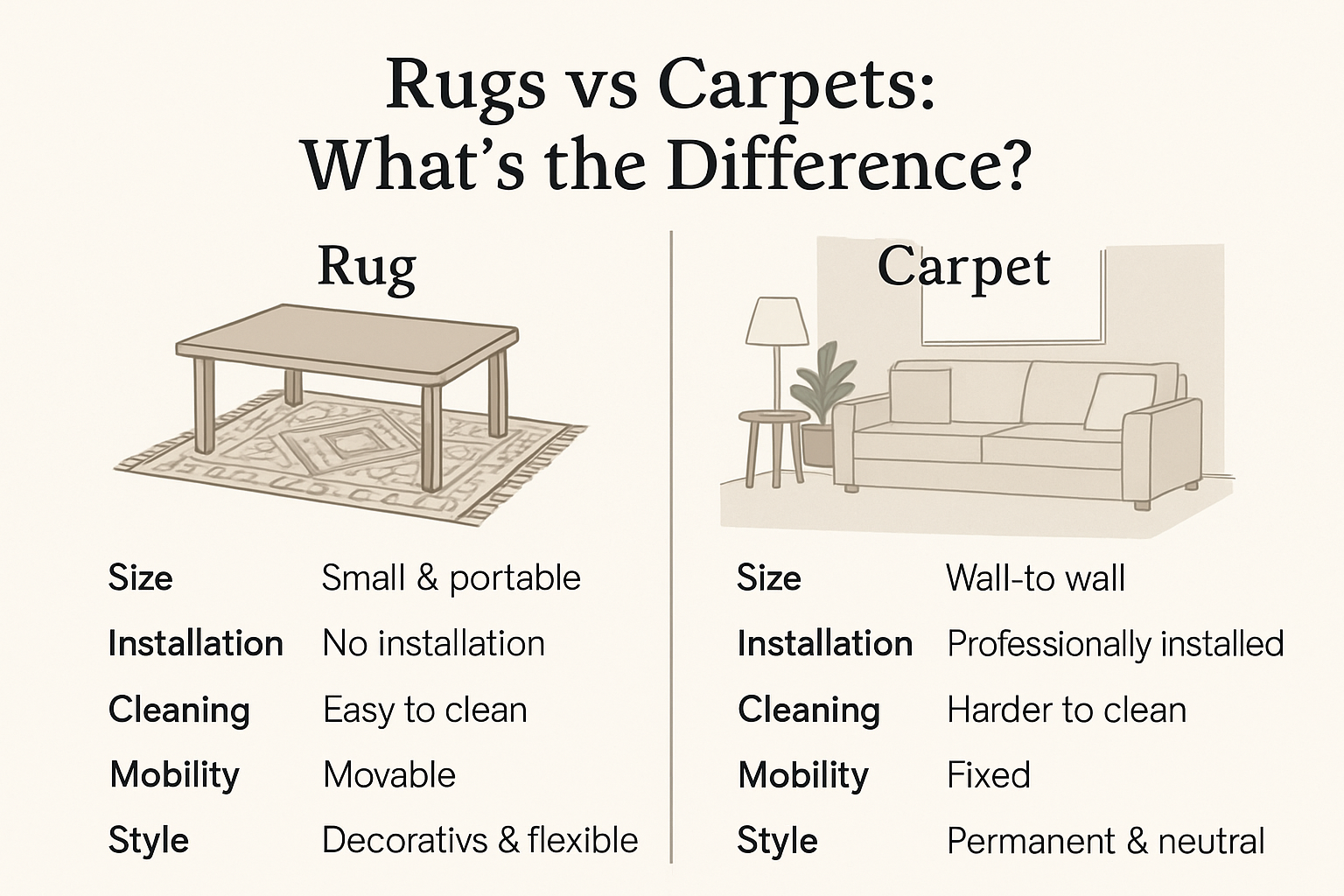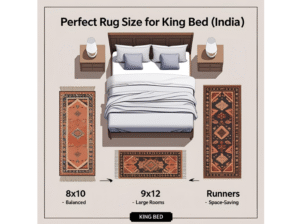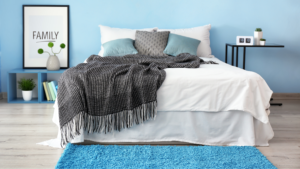Visit any store selling home decor and you’ll find something intriguing that’s not obvious: the words “rugs” and “carpets” are frequently used interchangeably even though they are entirely different kinds of flooring. This isn’t an issue of minor importance, it can cause costly mistakes in the process of decorating your home.
Knowing the difference between carpets and rugs is important more than you believe. The decision between them can affect every aspect of your home, from budget to cleaning routine, to the overall appearance of your home and practicality. When you’re planning to furnish your first house, remodeling an existing one or just curious about the basics of interior design understanding these differences can assist you in making better choices in your decorating.
This guide will explain the fundamental distinctions between carpets and rugs and covers all aspects from the installation requirement to flexibility in design, to the long-term cost and maintenance requirements. At the end of this guide you’ll be able to pick the right flooring for your particular circumstance.
What Makes Rugs and Carpets Different?
The main difference between carpets and rugs is in their dimensions, the installation technique, and usage. These distinctions influence every aspect of their use within your home.
Understanding Rugs
Rugs are movable flooring that is typically under 40 sq. feet. Rugs are made to cover particular spaces rather than complete rooms. They are available in standard sizes, such as 2×3 feet to accent furniture and 5×8 feet for spaces for seating in the living room or 8×10 feet to cover bigger areas. The primary characteristic of a rug is its versatility. You are able to lift it up or move it around or even take it outside to clean.
Understanding Carpets
Carpets on the other hand are durable floor coverings that are installed wall-to-wall across whole rooms or even areas. They are typically sold per square yard and cut to fit the specific area during professional installation. Once installed, carpets will become an integral part of your home’s construction that requires a lot of effort and expense to remove or replace.
The most important thing to remember is that rugs can be movable and temporary while carpets are permanently fixed and durable.
Installation and Placement Differences
The procedure of installing rugs is one of the biggest distinctions between carpets and rugs which affects convenience as well as cost.
Rug Placement
Rugs do not require any installation at all. They are simply removed from the roll and place them wherever you want. This is a simple process that allows you to be extremely flexible. can change your living room layout, transfer rug across rooms, or keep them in storage when they are not being used. Rugs are particularly useful in living spaces at coffee tables or in bedroom next to beds, on entryways as mats for welcoming guests, or as decorative pieces for hallways.
Rugs are often used by homeowners to separate spaces within open-plan floor designs. provide warmth to hard floors or to protect areas that are frequented by traffic without having to commit to permanent modifications.
Carpet Installation
Carpets require professional installation in the majority of instances. The process involves assessing your room and ordering the right quantity of carpet and then having the installers stretch and fix the carpet with tack strips to your walls. The process usually takes a few hours and involves moving furniture from the space.
Carpets are typically placed in living rooms, staircases, and hallways in which homeowners require total floor coverage and noise reduction. They are especially well-liked in homes with multiple floors in which noise-reduction between floors is essential.
Style and Design Flexibility
In terms of decoration choices and personal style carpets and rugs offer many different options.
Rug Design Options
Rugs are a treasure trove of shapes sizes, colors, patterns, and colors. There are round rugs and runners, rectangular rugs and even bespoke pieces. The design options are infinite, from traditional Persian patterns to contemporary geometric designs, old-fashioned distressed styles to modern minimalist designs.
Most importantly, rugs permit you to alter your interior decor according to the seasons or when your preferences change. It’s possible to have the bright and vibrant rug during summer, then change to warmer colors in autumn. This versatility makes rugs perfect for those who love to change their homes’ decor frequently.
Carpet Design Considerations
Carpets have fewer design options after installation however they offer consistency across your home. There are a myriad of styles, colors, and pile sizes, but you’re making a commitment to the selection for many years. Many homeowners opt for neutral colors for their carpets that don’t be in conflict with their furniture and decor.
While this could be considered unattainable, carpets are great at creating a coherent, cohesive design throughout your house. They also provide high-quality sound insulation as well as the warmth underneath compared to other rug types.
Cleaning and Maintenance Requirements
The different maintenance requirements between carpets and rugs significantly affect their durability and expense.
Rug Maintenance
Rugs provide superior cleaning flexibility. Rugs of a smaller size can be used outside for a hose-down or beating. A lot of rugs can be machine washed or easily vacuumed on both sides. If spills do occur it is possible to immediately flip or shift the rug to avoid the floor from being stained.
For more thorough cleaning Rugs that require a more thorough cleaning, you can take them to professional cleaning services or clean them yourself using rental equipment. If your rug is very stained or damaged replacing it is cost-effective and simple.
Carpet Maintenance
Carpet cleaning takes more planning and money. Regular vacuuming is helpful but carpets require a regular deep-cleaning by a professional every twelve to 18 months in order to maintain their appearance and cleanliness. If spills do occur it is imperative to act swiftly because liquids can soak into the padding underneath.
Carpets damaged by damage are challenging and costly to repair or replace. In most cases damaged areas will require replacing the entire area’s carpeting in order to create uniformity.
However, carpets of high-quality generally last longer than rugs if properly maintained, which makes them a great investment for installations that last a lifetime.
Cost Comparison: Upfront and Long-term
Knowing how much you will pay for your home will help you make better financial decisions concerning flooring.
Rug Costs
Rugs usually have lower upfront expenses, especially for smaller dimensions. A good 5×8 foot rug could cost between $200 and $800, based on the materials used and the construction. Rugs made by hand can cost more, however you’re still making one purchase with no charges for installation.
Costs for long-term maintenance are manageable because you can wash rugs yourself or change them in a series when needed. This means that rugs are affordable for renters, young professionals or anyone who wants to cut down on upfront decorating expenses.
Carpet Costs
Carpets are more expensive upfront due to the materials used and professional installation. Carpeting a 12-by-15-foot room can cost anywhere from $800 to 2,500 in accordance with carpet high-quality and labor costs.
Carpets can have a better long-term value than permanent installations. A good carpet will last 10 to 15 years with proper care, and could be cheaper than replacing several rug over the same time.
Detailed Comparison Overview Rugs vs Carpets
| Feature | Rugs | Carpets |
|---|---|---|
| Mobility | Easy to move | Fixed installation |
| Cleaning | Easy to clean or replace | Requires professional help |
| Cost | Generally lower | Higher upfront cost |
| Style Options | More varied | Limited once installed |
| Durability | Depends on quality | Usually more long-lasting |
Which One Should You Choose?
Here’s a quick guide:
- Choose Rugs If:
- You’re renting your home
- You like to change styles often
- You need easy cleaning options
- You’re decorating a small area or adding a layer to hardwood floors
- Choose Carpets If:
- You own your home
- You want a cozy, wall-to-wall feel
- You’re looking for better insulation and soundproofing
- You prefer a long-term flooring solution
Pro Tip: Some homeowners even combine both — using rugs on top of carpets for added design and warmth.
Conclusion
While rugs and carpets may look similar at first glance, they serve different purposes and offer unique benefits. Rugs are flexible, affordable, and perfect for small design updates. Carpets provide complete floor coverage, warmth, and long-term value.
Before buying, consider your space, lifestyle, and maintenance needs.
Looking to buy?
Explore premium rugs and carpets online that suit every style and budget — and find the perfect floor covering for your home today!





